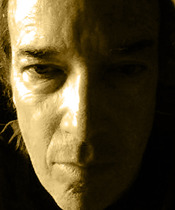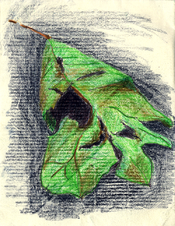Self-taught visionary artist. Painted every sunset for 11 years through 2016. Bio here. William Van Doren art also on Facebook and Instagram, and art prints on Pixels.com/Fine Art America. Author of the non-holiday book 47 Minutes on Christmas Eve. Coming in 2019, Into the Sunset: Paintings and Notes from 4,000 Nights.
VAN DOREN ON THE SUNSET SERIES
SUNSET SLIDESHOWS
Copyright © 2016 William Theodore Van Doren. All rights reserved. Reproduction in whole or in part without permission is prohibited.





Sunset, Friday, 24 July 2009
I got introduced lately (thanks to Aime Ballard-Wood) to a superfine blog called Sweet Juniper! (exclamation mark theirs, not mine, although ... I would have been happy to add one). I really don’t think I’m the last person in the world to find out about it, quite.
I’ve only scratched the surface of this rich rich site, but I think it’s written and photographed by James D. Griffioen, with occasional posts by his wife, who pens under the name Wood. I love the blog’s sensibility, the flowing and wide-ranging connections it makes, the feeling that there’s so much creative energy, love, irreverence, reverence and intelligence behind it that anything can and probably will happen.
Before I mention the thing that got me going today, I want to recommend posts on alphabet books JDG has made for his kids – this very funny account of his book of Greek letters contains links to the others – and to second his enthusiasm for the group Heartless Bastards. The two videos he posts from SXSW should win you over.
Feral houses. That’s what Griffioen calls abandoned houses that are overgrown and falling apart. He lives in Detroit, so he’s ‘got a million of ’em’ – and seemingly almost that many photographs, of houses and amazing larger buildings, even an abandoned zoo.
I won’t try to recap his riff on why these houses are ‘feral’ – except his comment that they’re returning to a wild state made me think about the attraction ruins have always had for artists, whether it’s someone like my man Corot going off to Rome or your grandpa painting an old barn. It occurred to me that I’ve never read anything about the source of the appeal. (That’s probably because I don’t get around much – seriously.) But I guess it’s just sort of assumed that these places are obviously ‘picturesque’ and/or, maybe, that their association with the past makes them ‘romantic’.
As Griffioen says, these houses start to return to nature:
For a long time, I’ve thought the artistic appeal of ruins was simply that: they become more integrated with the environment, they show a natural process at work. Now I see two other related aspects.
First, the art process, by definition, tends to unite anything it renders, such as any building, old or new, with everything else around it – that’s in the nature of style. Ruins are great because they’re already halfway there.
Second, a ruin contains time.
So, strange to say, even though it’s about the past, and time, it’s not about what the buildings once were. It’s all about what they now are.